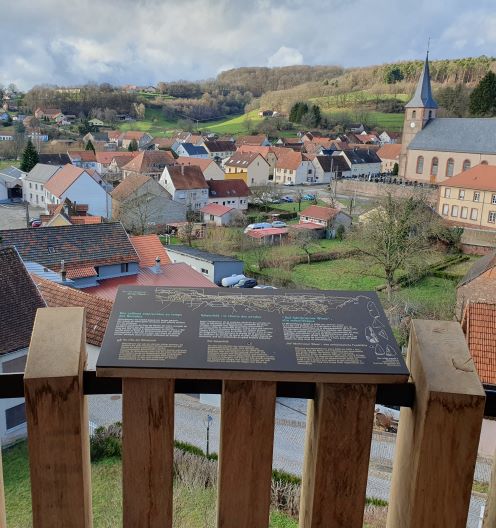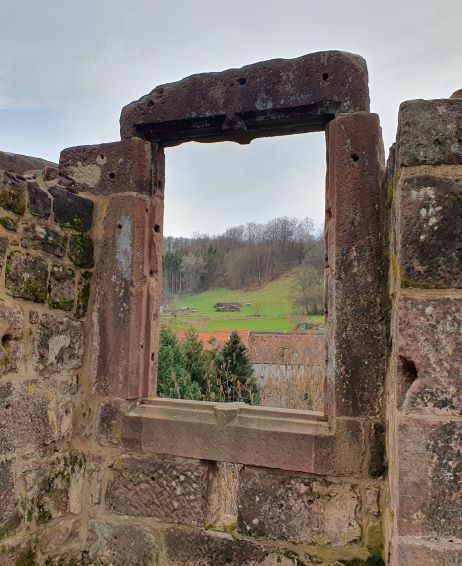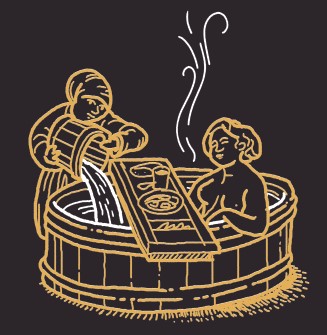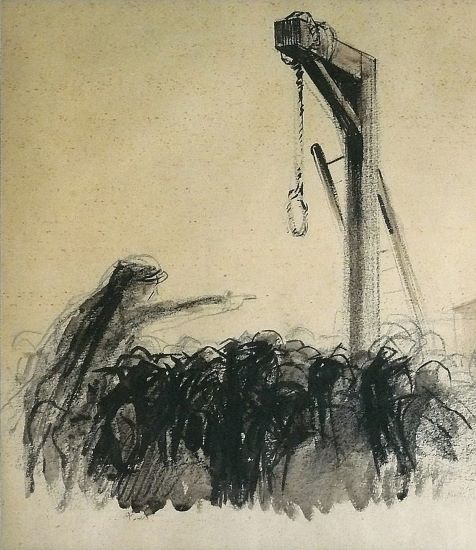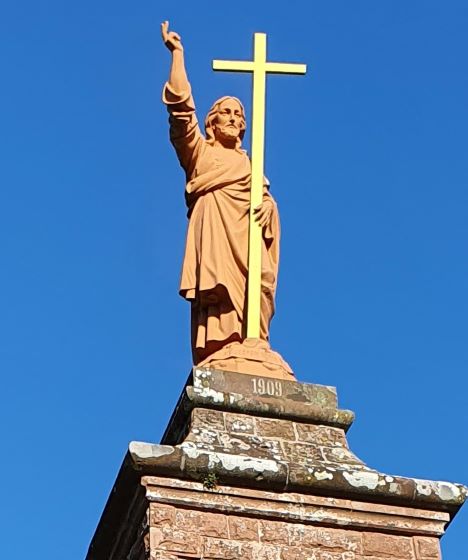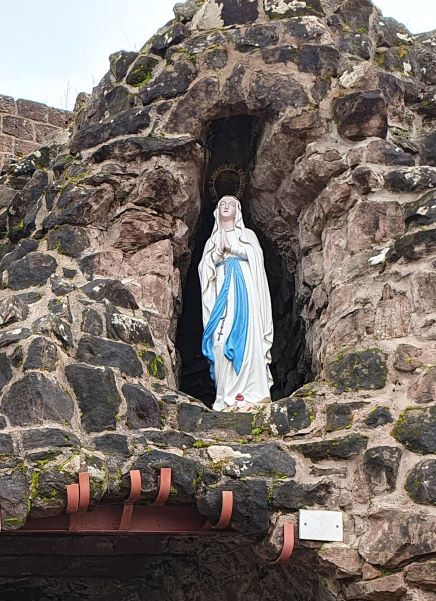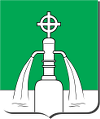
Welcome in Walschbronn
The communal mill and the sheet press
Along the Schwarzbach, which is flushed with the waters of the Eppenbrunn creek, and the road leading from Walschbronn to Waldhouse, on the right as you leave the village centre, at No. 101, a traditional rectangular house with arched sandstone windows retains nothing of the old mill except the site of the old canal, which has now been drained, and the arched support at the entrance to the building, which acts as a ventillerie for the water head. The fact that it belonged to the abbey of Sturzelbronn is recalled in the pediment of the entrance door and by a milestone bearing the abbey's coat of arms, at the foot of the building.
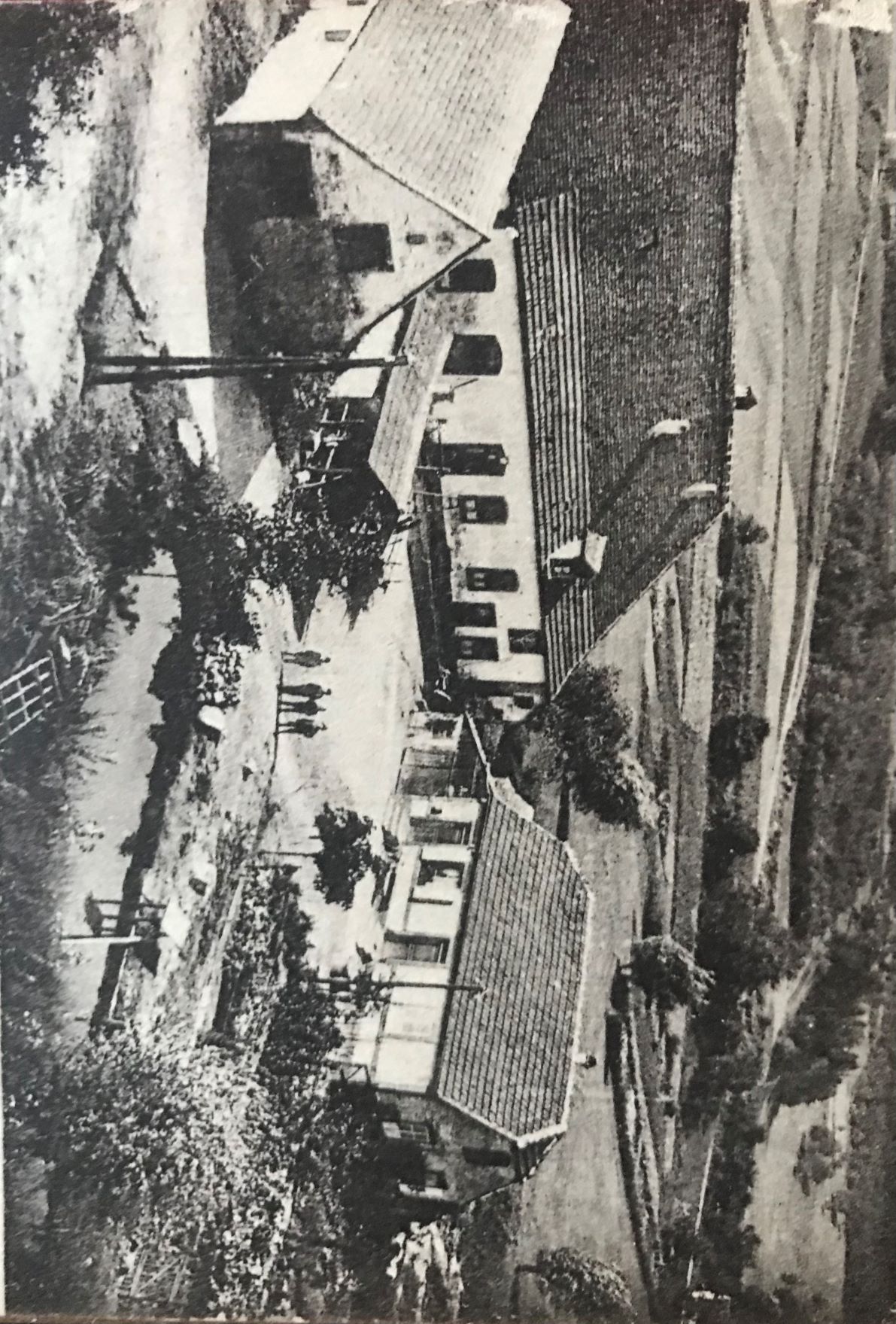
The origins of the mill
In 1196 Frédéric, Lord of Bitche, gave the parish of Walschbronn with all its dependencies to the abbey of Sturzelbronn, which in August 1244 received from Count Reinhard de Castel, Lord of Bitche, with the agreement of his wife Elise and his brother Duke Matthew of Lorraine the two-turn mill with the right of banality over Walschbronn, Steinhausen, Kröppen, Stautstein and Hergradwyler, barn and stables with land for thirty pounds of Metz, subject to the consent of his sons. These communes had to maintain the hydraulic system (construction and water flow) at their own expense and from now on they can have the grain milled elsewhere if they have to wait in vain for a day and a night.
The mill becomes the property of the abbey of Sturzelbronn
Conrad of Walschbronn, Schultheis of Bitche, who had illegally built a mill in Walschbronn to the detriment of the banality and used it for a long time, despite the agreement concluded with the abbey, acknowledged in Bitche on 25 March 1296 "finally his wrongs" and donated to the abbey the said mill destined for destruction "as an expiation" in the presence of his confessor, Gottfried, a Dominican in Metz, and his brothers Charles, a canon of Saint-Fabien in Hornbach, and Theodorich, who held a share in the mill, also ceded.
On the Thursday after the Visitation of the Blessed Mother in 1467, Earl Frederick of Deux-Ponts and Lord of Bitche rendered an arbitration decision in the dispute between Abbot Peter and his successor Diebold and the users of the common mill of Walschbronn, declaring that the hydraulic installation of the mill was to be the responsibility of the monastery, as the latter had not paid the peasants of the mill for the completion of the construction, which had been undertaken at the behest of the Abbot and the Earl That, in addition, one sester would be taken from one muid, half a sester from half a muid and a quarter of a sester from a quarter of a muid, which, contrary to what the peasants were asking, would not be considered as null, but sold, as these three measures had to be available. That between the millstone and the arches, there should only be an interval of one inch at the front. Finally, that the miller whose wife had been asked by the peasants to be excluded from the mill could not keep either chickens or pigs there.
Simon Wecker, Earl of Zweibrücken, Lord of Bitche, settles on the Wednesday after Saint Andrew's Day 1539 the dispute concerning the hydraulic system, the arrangement of which of 1467 had been only provisional and which had just resurfaced concerning the banal mill, by deciding that the water flow system would be carried out by the abbey, but that the peasants using the mill would have to supply and bring the wood necessary for this purpose to the commune of Walschbronn. That the arbitration sentence of 1467 was still valid, that the roads to Walschbronn would be repaired and that any problems between the miller (Jacques Müller) and the peasants using the mill would be settled by the bursar of the monastery and the bailiff of Bitche.
In the declaration of the inhabitants of the commune in 1585 (37 families), Jorich Miller is mentioned, and in 1593 (36 families), a miller named Geörg Vogel.
The mill after the Thirty Years' War
The first known miller after the Thirty Years' War is Philippe Wexel in 1702, from Bavaria. Jean Wendel Schabron, son of a miller from Hilst, was present the following year. He is sued on January 26, 1715 by Jean Pierre Beckrich, miller in Erching to pay him 82 pounds, namely: six pounds for two fasses of peas, ten pounds for a mill to clean the grains, sixty pounds for the transfer of the lease of the mill of Bitche and six pounds of discretions for having worked during his marriage.
Pierre Dubernel then settled in the establishment from 1716 to 1720 before he bought the Eguelshardt mill. The abbey then continued to rent this mill until the revolution; which the topographical atlas of the county of Bitche of 1758 represents as a rectangular building along the canal on its right-hand side going towards Waldhouse, with an agricultural building attached, in the canton known as Imbrühl, about one hundred metres from the village: Jean Ulrich Muller 1724-1757, Benedic Feit 1756-1763, Jean Adam Hener 1752-1779 and Claude Helfrig 1779-1791.
The mill after the French revolution
Attached to the estate as a national asset, it was bought on 5 May 1791 by Pierre Sinning, a local carpenter, for 9,600 pounds, but he soon sold it.
Daniel Huber (+ 01/12/1820) occupies the establishment, rented by the heirs from 1821 to 1832 to Chrétien Lehman then Georges Deutscher then sold in 1834 to Henry von Huben (13 messidor year 7 / 29/04/1836).
On 30 March 1837, Joseph Weber bought the two-turn flour mill, barn, distillery and stables, yard and garden in the Walschbronner Muhle district from the widow von Huben and her minor daughter Marie. In the same year he repaired the gates built in 1809, installed a third turntable for the oil mill and had various repairs carried out by Jean Sefrin, a carpenter from Vinzeln.
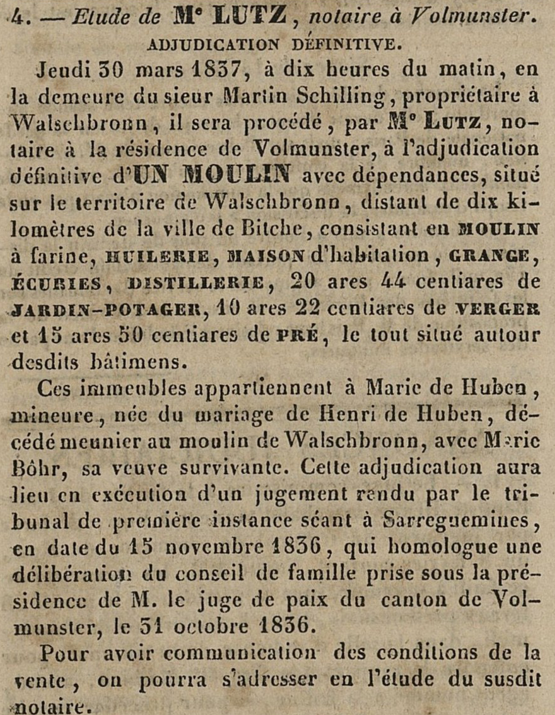
The mill is now completely transformed and looks much the same as it does today. A large building, 38 metres long and 12 metres wide, includes the mill, the dwelling house and the barn. The millstream, the diversion of which has been greatly reduced compared to the 1758 plan, runs alongside the stables, under the bridge and under the building.
Following a petition from twenty-one owners, the town hall reported to the sub-prefecture in 1850 that the new owner of the three-wheeled mill (diameter of 4.15 m, 4.22 m and 4.40 m and width of 61 cm, 64 cm and 61 cm), Pierre Greff of Neunkirch, since the adjudication of 18 March 1844 has a too high reservoir whereas *"in the past there was no stagnant water in the village which causes a corruption of air and which are all the more harmful at the time of the floods which are frequent and which damages the fountains, dwellings, cellars and gardens, causes disease, inconveniences the circulation because of the ice in winter". Also on 17 May 1852, he was ordered to build a weir with a surface area of seven metres long, plus a pair of water retention gates for the irrigation canal measuring 2.51 m wide and 1.05 m high, a pair of water retention gates for the feeder canal measuring 3.09 m by 1.15 m high and a set of three motorised gates measuring 1.06 m, 1.15 m and 62 cm wide. On 29 February 1860, the inhabitants again asked the sub-prefect for permission to dig a new feeder canal to the mill, but nine owners were opposed to this and the town hall was of the opinion that the prefectural administration should arbitrate. A reply stated that the request to divert the inlet canal should not be granted because of these objections. The mill was rented out in 1846.
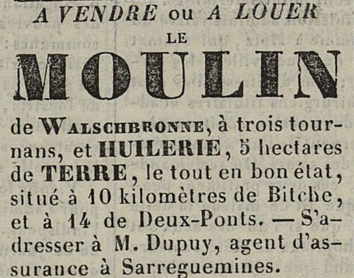
In 1857, Jacques Conrad (26/10/1823 / 08/03/1898) then his son-in-law Michel Krieg (20/07/1847 / 08/08/1918) took over the factory, which was regulated on 9 March 1864 and sold to Aloyse Krieg in July 1911.
An incident at the mill in the early 20th century
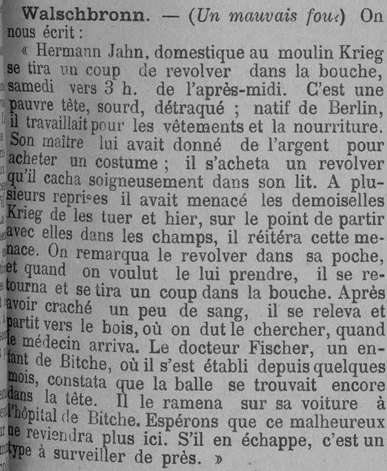
Forced auction after the First World War
On 17 May 1926, following a forced auction, Joseph and Nicolas Huber from the Ziegelhutte bought the flour mill for 54,000 marks - equipped with a single water wheel with a two-metre radius, which was replaced after several requests for authorisation in December 1927 by a Francis turbine with a waterfall of 2.20 metres and a driving water volume of 250 litres per second out of an average water flow of 350 litres from the brook, a power of 5.5 horsepower and an efficiency of 75% - managed by Jean Henner. The new owners wish to build an energy factory for the village.
As early as 4 June 1926, Nicolas Huber (18/05/1888 / 26/06/1962) requested permission to rebuild the ruined weir and at the same time to raise the legal level of the canal's reservoir. A new lock was built in 1928 and an increase of ten centimetres was authorised on 3 March 1936.
On 20 June 1934, the mill was seized by the Bitche court and sold on 6 December to Nicolas Roth (18/09/1890 / 23/07/1945) for 45,000 francs and from 1936 to Wendel Roth (30/06/1910 / 13/08/1983). The crushing capacity was six quintals of wheat per day and 700 quintals per year. The driving force normally used was obtained by water, i.e. about ten horsepower and a ten horsepower Lanz type diesel engine, and the emergency force by a fifteen horsepower Swidersky type lean gas engine and a diesel engine. The Schneider-Jacquet turbine is powered by a 2.2 m waterfall and a flow rate of 250 litres per second. The milling equipment still includes two pairs of 1200 mm diameter millstones with a speed of 135 revolutions and a pair of roller mills with 260 revolutions per minute, a diameter of 300 mm for the rollers and a working length of 60 cm. The sieving is carried out by planichters, i.e. eleven sieves of 1.6 m length and 50 cm width and a speed of 190 revolutions.
Material plundered during the Second World War
This equipment was stolen during the Second World War and only the sawing equipment was returned after the conflict. The mill has not been in operation since about 1955, but there were still disputes in 1960 and 1982 about the cleaning of the stream and the mill channel.
Sheet press
Below Walschbronn, probably on the Schwarzbach, a sheet press is still mentioned, attested in 1621, charged with a cens of one franc which "is of long years Ruyné (1680)" and belonging to Humbert the son of Gaspard Wecker.
